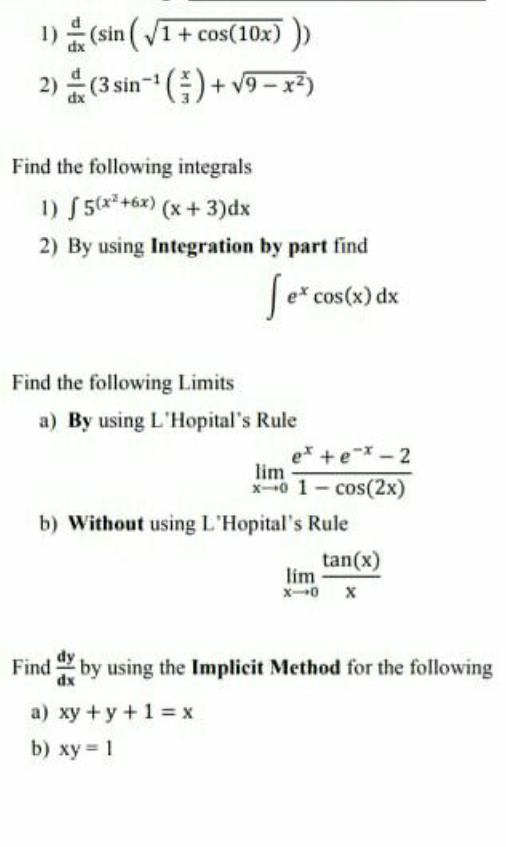
AllQuestion and Answers: Page 1125
Question Number 105278 Answers: 1 Comments: 1
Question Number 105200 Answers: 0 Comments: 0

Question Number 105195 Answers: 2 Comments: 0

Question Number 105189 Answers: 0 Comments: 2

Question Number 105181 Answers: 1 Comments: 0
Question Number 105235 Answers: 1 Comments: 0
Question Number 142176 Answers: 1 Comments: 0
Question Number 105167 Answers: 1 Comments: 1

Question Number 105163 Answers: 2 Comments: 0
$${x}^{\mathrm{2}} {y}''+{xy}'−{y}=\frac{\mathrm{1}}{\mathrm{1}+{x}^{\mathrm{2}} } \\ $$
Question Number 105158 Answers: 4 Comments: 0
Question Number 105157 Answers: 1 Comments: 0
Question Number 105155 Answers: 1 Comments: 0

Question Number 105132 Answers: 12 Comments: 0

Question Number 105130 Answers: 0 Comments: 0
Question Number 105126 Answers: 2 Comments: 0
Question Number 142171 Answers: 3 Comments: 0
Question Number 142168 Answers: 0 Comments: 1

Question Number 142167 Answers: 1 Comments: 0
Question Number 105124 Answers: 1 Comments: 0
Question Number 105118 Answers: 1 Comments: 0
$${x}^{\mathrm{2}} {y}''+{xy}'−{y}\:=\:\frac{\mathrm{1}}{{x}+\mathrm{1}}\: \\ $$
Question Number 105114 Answers: 2 Comments: 0
Question Number 105113 Answers: 2 Comments: 0

Question Number 105112 Answers: 2 Comments: 0
Question Number 105106 Answers: 3 Comments: 0
Question Number 105104 Answers: 2 Comments: 0
Question Number 105120 Answers: 1 Comments: 0
Pg 1120 Pg 1121 Pg 1122 Pg 1123 Pg 1124 Pg 1125 Pg 1126 Pg 1127 Pg 1128 Pg 1129
